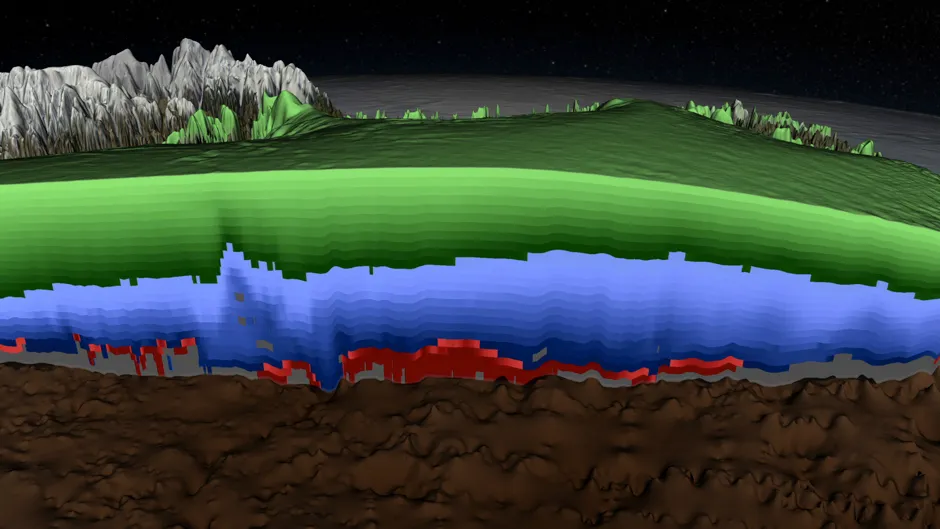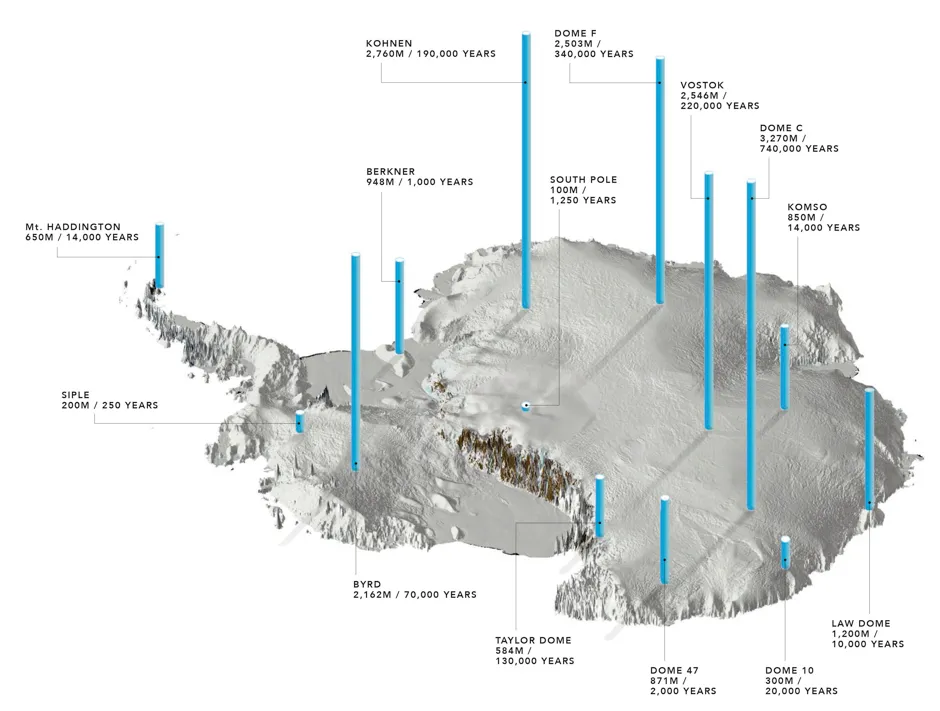In Antarctica, you can go back in time.
The ice contains a secret history of the Earth’s climate that goes back hundreds of thousands of years. When snow falls in the Antarctic, it never melts, it just accumulates, snow on snow, year on year, until it is kilometres thick.
As the weight of the ice crushes the fluffy snowflakes, it turns the snowpack first to a granular ice called ‘firn’, then, eventually, into solid glacial ice.
The air that was originally trapped in the snow when it landed as a snowflake is entombed as small bubbles within the solid ice, and these bubbles contain a record of the atmosphere and climate at the time the snow originally fell.

As more snow falls, the older ice is buried deeper and deeper; so, generally, the deeper the ice, the older it is.
But it’s not quite that simple: the pressure of the tonnes of ice above deforms the ice crystals and the ice starts to flow, and the further from the centre of the continent it is, the faster it flows. This keeps the amount of ice in balance and also means that, towards the coasts, where the ice is thinner and faster-moving, it is younger. The oldest ice is always deep within the continental interior at the drainage divides, where the speed of the ice flow is almost zero.
The map (below) shows the locations of the major ice cores taken on the continent, their depth and the age of the oldest ice at the bottom of the core.

Over the past fifty years, these ice cores, along with similar (but shorter) cores from Greenland, have given us a detailed picture of the climate of the Earth over the past three quarters of a million years. Those tiny air bubbles deep within the ice have shown us how humanity has changed the global atmosphere and how carbon dioxide and other greenhouse gases have increased as we have burned more fossil fuels.
The ice cores are the smoking gun that proves the greenhouse effect and the theory of human-induced climate change.
Read more about climate change and Antarctica:
- Rapid Ice Age retreat of Antarctic ice gives stark climate change warning
- Penguins help researchers identify the most vulnerable areas of the Antarctic
- Antarctica is “getting greener” due to climate change
Extracted from Antarctic Atlas by Peter Fretwell, published 26 November (£35, Particular Books).
- Buy now from Amazon UK, Bookshop or Waterstones